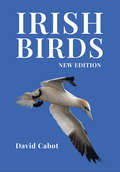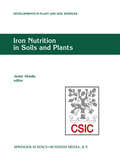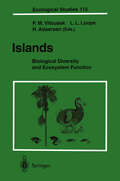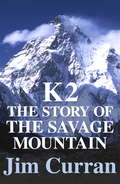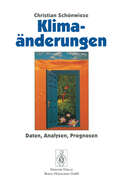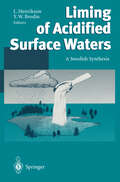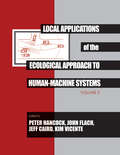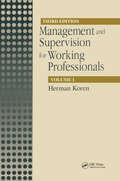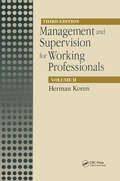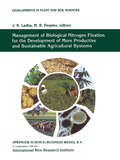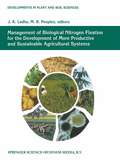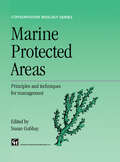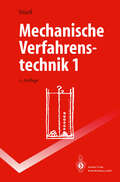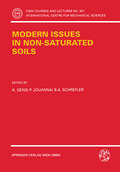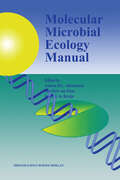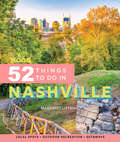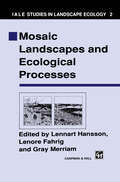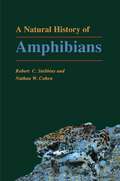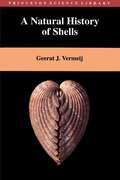- Table View
- List View
Irish Birds (Collins Gem Ser.)
by David CabotAn easy-to-use, fully illustrated guide to the birds of Ireland
Iron Nutrition in Soils and Plants: Proceedings of the Seventh International Symposium on Iron Nutrition and Interactions in Plants, June 27–July 2, 1993, Zaragoza, Spain (Developments in Plant and Soil Sciences #59)
by Javier AbadíaIron is a major constituent of the earth crust. However, under alkaline conditions commonly found in arid and semi-arid environments iron becomes unavailable to plants. When plants are affected by a shortage of iron their leaves become yellow (chlorotic), and both plant growth and crop yield are reduced. The roots of plants affected by iron deficiency may develop a series of responses directed to improve iron uptake, such as increased proton excretion and iron reduction capabilities or excretion of iron chela tors called siderophores. Iron deficiency affects major crops worldwide, including some of major economic importance such as fruit trees and others. Correction of iron deficiency is usually implemented through costly application of synthetic chelates. Since these correction methods are very expensive, the competitivity of farmers is often reduced and iron deficiency may become a limiting factor for the maintenance, introduction or expansion of some crops. In spite of the many years devoted to the study of iron deficiency, the knowledge of iron deficiency in soils and plants is still fragmentary in many aspects. We have only incomplete information on the processes at the molecular level that make some plant species and cultivars unable to take and utilize iron from the soil, whereas other plants grow satisfactorily under the same conditions.
Islands: Biological Diversity and Ecosystem Function (Ecological Studies #115)
by K. MadsenOceanic islands represent a set of systems in which biological diversity varies as a consequence of remoteness or size, not environment; they are also generally simpler than continental ecosystems. Islands therefore provide an opportunity to determine the direct effects of biological diversity on ecosystem function. The volume addresses the components of biological diversity on islands and their patterns of variation; the modern threats to the maintenance of biological diversity on islands; the consequences of island biology and its modification by humanity regarding aspects of ecosystem function; the global implications of islands for conservation; and how islands can help one to understand the processes inducing changes throughout the world.
K2: The Story Of The Savage Mountain
by Jim CurranK2 is the world's second highest mountain, but its savage reputation is second to none. The loss of Alison Hargreaves and six companions in 1995 was a grim echo of the multiple deaths in 1986 and of earlier disasters which have become part of climbing legend. K2 has always attracted the greatest names in mountaineering. Wiessner, Houston, Bonatti, Diemberger and Bonington are among those whose lives have been permanently scarred by their experiences on it. At the same time some inspiring new routes have been achieved on the world's most difficult 8000-metre peak.Jim Curran, himself a survivor of 1986, has traced the history of the mountain from the nineteenth-century pioneer explorers down to the present, and sees a repeating pattern of naked ambition, rivalry, misjudgement and recrimination. He has also found selfless heroism and impressive route-making on the mountain that top climbers will always covet as the ultimate prize.
Klimaänderungen: Daten, Analysen, Prognosen
by Christian SchönwieseUm die Folgen menschlicher Eingriffe in die Natur verständlich zu machen, zeigt das Buch, wie Klimaforscher heute arbeiten, woher die Klimadaten kommen und was man über die Klimaänderungen vergangener Zeiten und ihre Ursachen weiß.
Liming of Acidified Surface Waters: A Swedish Synthesis
by Lennart Henrikson Y. W. BrodinAcidification is one of the most serious environmental problems - especially in Sweden, which suffers most from the consequences of acid rain. Besides international negotiations to reduce sulphur emissions - 85% of the acid load on Sweden can be traced to emissions from outside the country itself - the Swedish Government has employed large-scale, operative liming activities to counteract acidification of surface waters. The scientific results show that - although acidification cannot be solved by liming alone - the measures taken resulted in substantial improvements to around 8,000 Swedish lakes and watercourses. The idea is that other countries affected by acidification may also profit from this experience.
Local Applications of the Ecological Approach To Human-Machine Systems (Resources for Ecological Psychology Series)
by Peter Hancock, John Flach, Jeff Caird and Klim VicenteThere is a growing consensus in the human factors/ergonomics community that human factors research has had little impact on significant applied problems. Some have suggested that the problem lies in the fact that much HF/E research has been based on the wrong type of psychology, an information processing view of psychology that is reductionistic and context-free. Ecological psychology offers a viable alternative, presenting a richer view of human behavior that is holistic and contextualized. The papers presented in these two volumes show the conceptual impact that ecological psychology can have on HF/E, as well as presenting a number of specific examples illustrating the ecological approach to human-machine systems. It is the first collection of papers that explicitly draws a connection between these two fields. While work in this area is only just beginning, the evidence available suggests that taking an ecological approach to human factors/ergonomics helps bridge the existing gap between basic research and applied problems.
Local Applications of the Ecological Approach To Human-Machine Systems (Resources for Ecological Psychology Series)
by Peter A. Hancock John M. Flach Jeff Caird Kim J. VicenteThere is a growing consensus in the human factors/ergonomics community that human factors research has had little impact on significant applied problems. Some have suggested that the problem lies in the fact that much HF/E research has been based on the wrong type of psychology, an information processing view of psychology that is reductionistic and context-free. Ecological psychology offers a viable alternative, presenting a richer view of human behavior that is holistic and contextualized. The papers presented in these two volumes show the conceptual impact that ecological psychology can have on HF/E, as well as presenting a number of specific examples illustrating the ecological approach to human-machine systems. It is the first collection of papers that explicitly draws a connection between these two fields. While work in this area is only just beginning, the evidence available suggests that taking an ecological approach to human factors/ergonomics helps bridge the existing gap between basic research and applied problems.
Make 22 Herbal Gifts for the Holidays: Storey's Country Wisdom Bulletin A-149 (Storey Country Wisdom Bulletin)
by Editors of Garden Way PublishingSince 1973, Storey's Country Wisdom Bulletins have offered practical, hands-on instructions designed to help readers master dozens of country living skills quickly and easily. There are now more than 170 titles in this series, and their remarkable popularity reflects the common desire of country and city dwellers alike to cultivate personal independence in everyday life.
Management and Supervision for Working Professionals, Third Edition, Volume I
by Herman KorenThe practical set of methods and tools contained in the two volumes of Management and Supervision for Working Professionals provides the reader with the knowledge and means to become an effective manager or supervisor. Volume I emphasizes organizational structure, planning, and leadership, while Volume II emphasizes communication, instruction, and daily management responsibilities such as performance ratings, unions, and health and safety.
Management and Supervision for Working Professionals, Third Edition, Volume I
by Herman KorenThe practical set of methods and tools contained in the two volumes of Management and Supervision for Working Professionals provides the reader with the knowledge and means to become an effective manager or supervisor. Volume I emphasizes organizational structure, planning, and leadership, while Volume II emphasizes communication, instruction, and daily management responsibilities such as performance ratings, unions, and health and safety.
Management and Supervision for Working Professionals, Third Edition, Volume II
by Herman KorenThe practical set of methods and tools contained in the two volumes of Management and Supervision for Working Professionals provides the reader with the knowledge and means to become an effective manager or supervisor. Volume I emphasizes organizational structure, planning, and leadership, while Volume II emphasizes communication, instruction, and daily management responsibilities such as performance ratings, unions, and health and safety.
Management and Supervision for Working Professionals, Third Edition, Volume II
by Herman KorenThe practical set of methods and tools contained in the two volumes of Management and Supervision for Working Professionals provides the reader with the knowledge and means to become an effective manager or supervisor. Volume I emphasizes organizational structure, planning, and leadership, while Volume II emphasizes communication, instruction, and daily management responsibilities such as performance ratings, unions, and health and safety.
Management of Biological Nitrogen Fixation for the Development of More Productive and Sustainable Agricultural Systems: Extended versions of papers presented at the Symposium on Biological Nitrogen Fixation for Sustainable Agriculture at the 15th Congress of Soil Science, Acapulco, Mexico, 1994 (Developments in Plant and Soil Sciences #65)
by J. K. Ladha M. B. PeoplesTable 1. Global allocation of arable land between different com modities Globally, cereal cropping dominates cultivated land Commodities' Proportion of land area use (around 50% of total area, Table I). The remain (%) ing arable land is used for production of oilseed, fibre, or food and cash crops. In addition, vast areas are Cereals maintained under temporary or permanent pasture for Wheat 16 forage production (2-3 fold greater than the total area Rice 10 under cultivation and permanent crop; Table 1, Fig. Maize 9 O. All cultivated crops, except for legumes (pulses All other cereals 13 and legume oilseeds) require the soil to provide rel Total 48 atively large amounts of nitrogen (N). It is necessary for the three most important cereals, wheat (Triticum Legumes aestivum), rice (Oryza sativa) and maize (Zea mays), Legume pulses 5 1 to take up 20 to 40 kg soil N ha- over a period of 3 Legume oilseeds 6 to 5 months to satisfy the N requirements of the seed and supporting vegetative structure for each tonne of Total II grain produced (e. g. Fig. 2; Myers, 1988). Produc tive pastures on the other hand may assimilate> 100 Other crops kg N ha -\ each annum, of which 50 to 90% will be Other oilseeds 6 consumed by livestock in intensively grazed systems Beverages I Tobacco 7 (Ledgardy, 1991; Thomas, 1995).
Management of Biological Nitrogen Fixation for the Development of More Productive and Sustainable Agricultural Systems: Extended versions of papers presented at the Symposium on Biological Nitrogen Fixation for Sustainable Agriculture at the 15th Congress of Soil, Acapulco, Mexico, 1994 (Boston Studies in the Philosophy and History of Science)
by J. K. Ladha, M. B. PeoplesTable 1. Global allocation of arable land between different com modities Globally, cereal cropping dominates cultivated land Commodities' Proportion of land area use (around 50% of total area, Table 1). The remain (%) ing arable land is used for production of oilseed, fibre, or food and cash crops. In addition, vast areas are Cereals maintained under temporary or permanent pasture for Wheat 16 forage production (2-3 fold greater than the total area Rice 10 under cultivation and permanent crop; Table 1, Fig. Maize 9 1). All cultivated crops, except for legumes (pulses All other cereals 13 and legume oil seeds) require the soil to provide rel Total 48 atively large amounts of nitrogen (N). It is necessary for the three most important cereals, wheat (Triticum Legumes aestivum), rice (Oryza sativa) and maize (Zea mays), Legume pulses 5 to take up 20 to 40 kg soil N ha -lover a period of 3 Legume oilseeds 6 to 5 months to satisfy the N requirements of the seed and supporting vegetative structure for each tonne of Total II grain produced (e. g. Fig. 2; Myers, 1988). Produc tive pastures on the other hand may assimilate> 100 Other crops I kg N ha- each annum, of which 50 to 90% will be Other oilseeds 6 consumed by livestock in intensively grazed systems Beverages / Tobacco 7 (Ledgardy, 1991; Thomas, 1995).
Marine Protected Areas: Principles and techniques for management (Conservation Biology #5)
by SusanGubbayMarine protected areas (MPAs) have an important role in marine conserva tion programmes around the world. Although most have been established relatively recently when compared with protected areas on land, there is considerable expertise on their identification, setting up and management. Some techniques have been adapted from those used on land. Others are novel, and unique to marine conservation. The chapters in this book give an insight into this fast developing field where experiment and innovation work alongside techniques which have been tried and tested. The guiding princi ples behind key stages in the setting up and management of MP As are described, and case studies illustrate how they have worked. While it is most encouraging to read about the successes, the case studies also point to difficulties which have been encountered. Not all of the examples are new or recent but, together, they illustrate what is happening in this field.
Markets, the State and the Environment: Towards Integration
Markets, the State and the Environment provides an introduction and interdisciplinary, critical overview of the case for a more market-based approach to environmental policy, taking stock of the key theoretical debates and a selection of recent policy developments in Europe, the US and Australia. The anthology compares and evaluates a wide range of market-based policy instruments (including taxes, charges and tradeable permits, privatisation and the encouragement of self-regulation) against the experience of the traditional regulatory approach in relation to the criteria of environmental effectiveness, efficiency, democratic participation, and social equity. The debate about environmental policy tools is also located in the context of the changing relationship between the state and the market in an increasingly interdependent world.
Mechanische Verfahrenstechnik 1 (Springer-Lehrbuch)
by Matthias StießBand 1 dieses zweibändigen Lehrbuches gibt dem Lernenden aufbauend auf den Grundlagen einen Einstieg in die verfahrenstechnische Behandlung der vielfältigen Probleme mit dispersen Stoffen. Partikeln und disperse Systeme und ihre wichtigsten Wechselwirkungen mit dem umgebenden Fluid (Flüssigkeit und Gas) und miteinander (Haftkräfte) werden behandelt. Partikelmeßtechnik, das Lagern und Fließen von Schüttgütern, Feststoffmischen, Rühren und das Klassieren sind weitere Themen. Jedes Kapitel enthält außer den Beispielen im Text noch einen Abschnitt mit Übungsaufgaben und durchgerechneten Lösungen.
Modern Issues in Non-Saturated Soils (CISM International Centre for Mechanical Sciences #357)
by A. Gens P. Jouanna B. A. SchreflerCoupling phenomena in non-saturated soils are fast becoming a headache for at least one of the following reasons: the large number of equations and unknowns, the complex T.H.M. behaviour of the soils, the sophisticated instrumentation required and/or the numerical instability encountered. If this is precisely your headache, read about the problem - and solutions to it - in "Modern Issues in Non-Saturated Soils”.
Molecular Ecology of Aquatic Microbes (Nato ASI Subseries G: #38)
by Ian JointA NATO ASI on "Molecular Ecology of Aquatic Microbes" was held at II Ciocco, Lucca, Italy from 28 August - 9 September 1994. The aims of the ASI were to evaluate the potential for molecular biology to solve some important questions in aquatic microbiology, particularly in relation to biogeochemical cycling and microbial physiology. Techniques developed by molecular biologists have now been adopted by a wide range of scientific disciplines. In the last 5 years, aquatic microbial ecologists have begun to incorporate these methods into their research and, as a result, are developing a much clearer understanding of phylogenetic diversity, the molecular basis of physiological acclimations and the transduction of environmental signals and organism responses. The aim of this ASI was to assess progress in this new field of research, to compare and describe techniques and experimental approaches, and to foster communication between disciplines. The ASI offered an excellent opportunity to bring together aquatic ecologists with molecular biologists and to encourage efficient technology transfer. The meeting of information on the status provided a forum for detailed and broad exchange and trends of aquatic molecular ecology and to assess how emerging molecular techniques might solve some important problems in ecology which have prove intractable because of lack of appropriate methodologies.
Molecular Microbial Ecology Manual
by A. D. Akkermans Jan Dirk Van Elsas F. J. De BruijnFor a long time microbial ecology has been developed as a distinct field with in Ecology. In spite of the important role of microorganisms in the environ ment, this group of 'invisible' organisms remained unaccessable to other ecologists. Detection and identification of microorganisms remain largely dependent on isolation techniques and characterisation of pure cultures. We now realise that only a minor fraction of the microbial community can be cultivated. As a result of the introduction of molecular methods, microbes can now be detected and identified at the DNA/RNA level in their natural environment. This has opened a new field in ecology: Molecular Microbial Ecology. In the present manual we aim to introduce the microbial ecologist to a selected number of current molecular techniques that are relevant in micro bial ecology. The first edition of the manual contains 33 chapters and an equal number of additional chapters will be added this year. Since the field of molecular ecology is in a continuous progress, we aim to update and extend the Manual regularly and will invite anyone to deposit their new protocols in full detail in the next edition of this Manual.
Moon 52 Things to Do in Nashville: Local Spots, Outdoor Recreation, Getaways
by Margaret LittmanFrom that venue you haven&’t made it to yet to the weekend in the Smokies you keep meaning to plan, experience something new right here at home with Moon 52 Things to Do in Nashville.Cool things to do in and around the city: Get your hands dirty at a maker studio, discover a new museum, or get to know some of the local artists on Jefferson Street. Take a dance lesson or songwriting class, scope out thrift stores, or get fitted for custom-made cowboy boots. Catch an up-and-comer at Two Old Hippies or go backstage at the Ryman. Take your bike to the Shelby Bottoms Greenway and grab a beer as a post-ride reward. Feast on Kurdish food, test your tastebuds on hot chicken, or taste your way through Southern barbecue historyDay trips and weekend getaways: Sip samples at distilleries along the Tennessee Whiskey Trail, or groove to the blues in Memphis. Go whitewater rafting on the Ocoee, take the car out for cruise along the Natchez Trace Parkway, or go camping in Great Smoky Mountains National ParkExperiences broken down by category: Find ideas for each season, activities with kids, outdoor adventures, historic sites, live music, and moreA local's advice: Whether it&’s a bucket-list venue or an under-the-radar vintage shop, local author Margaret Littman knows the ins and outs of NashvilleInspirational full-color photos throughout Easy-to-scan planning tips: Addresses and time allotment, plus tips for avoiding the crowds if you're heading to a popular attractionWhat are you doing this weekend? Try something new with Moon 52 Things to Do in Nashville. About Moon Travel Guides: Moon was founded in 1973 to empower independent, active, and conscious travel. We prioritize local businesses, outdoor recreation, and traveling strategically and sustainably. Moon Travel Guides are written by local, expert authors with great stories to tell—and they can't wait to share their favorite places with you.For more inspiration, follow @moonguides on social media.
Mosaic Landscapes and Ecological Processes
by L. Hansson L. Fahrig G. MerriamThis series presents studies that have used the paradigm of landscape ecology. Other approaches, both to landscape and landscape ecology are common, but in the last decade landscape ecology has become distinct from its predecessors and its contemporaries. Landscape ecology addresses the relationships among spatial patterns, temporal patterns and ecological processes. The effect of spatial configurations on ecological processes is fundamental. When human activity is an important variable affecting those relationships, landscape ecology includes it. Spatial and temporal scales are as large as needed for comprehension of system processes and the mosaic included may be very heterogeneous. Intellec tual utility and applicability of results are valued equally. The Inter national Association for Landscape Ecology sponsors this series of studies in order to introduce and disseminate some of the new knowledge that is being produced by this exciting new environmental science. Gray Merriam Ottawa, Canada Foreword This is a book about real nature, or as close to real as we know - a nature of heterogeneous landscapes, wild and humanized, fine-grained and coarse-grained, wet and dry, hilly and flat, temperate and not so temper ate. Real nature is never uniform. At whatever spatial scale we examine nature, we encounter patchiness. If we were to look down from high above at a landscape of millions of hectares, using a zoom lens to move in and out from broad overview to detailed inspection of a square meter we would see that patterns visible at different scales overlay one another.
A Natural History of Amphibians
by Robert C. Stebbins Nathan W. CohenThis is a book for all readers who want to learn about amphibians, the animal group that includes frogs, toads, salamanders, and caecilians. It draws on many years of classroom teaching, laboratory experience, and field observation by the authors. Robert Stebbins and Nathan Cohen lead readers on a fascinating odyssey as they explore some of nature's most interesting creatures, interspersing their own observations throughout the book. A Natural History of Amphibians can serve as a textbook for students and independent learners, as an overview of the field for professional scientists and land managers, and as an engaging introduction for general readers. The class Amphibia contains more than 4,500 known living species. New species are being discovered so rapidly that the number may grow to more than 5,000 during our lifetimes. However, their numbers are being rapidly decimated around the globe, largely due to the encroachment of humans on amphibian habitats and from growing human-caused environmental pollution, discussed at length in the final chapter. The authors focus our attention on the "natural history" of amphibians worldwide and emphasize their interactions with their environments over time: where they live; how they reproduce; how they have been affected by evolutionary processes; what factors will determine their destinies over time. Through the experienced eyes of the authors, who are skilled observers, we come to see and understand the place of amphibians in the natural world around us.
A Natural History of Shells (PDF)
by Geerat J. VermeijGeerat Vermeij wrote this "celebration of shells" to share his enthusiasm for those supremely elegant creations and what they can teach us about nature. Most popular books on shells emphasize the identification of species, but Vermeij uses shells as a way to explore major ideas in biology. How are shells built? How do they work? How did they evolve? The author lucidly and charmingly demonstrates how shells give us insights into the lives of animals in our own day as well as in the distant geological past.
